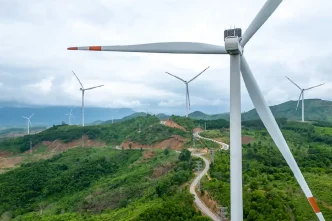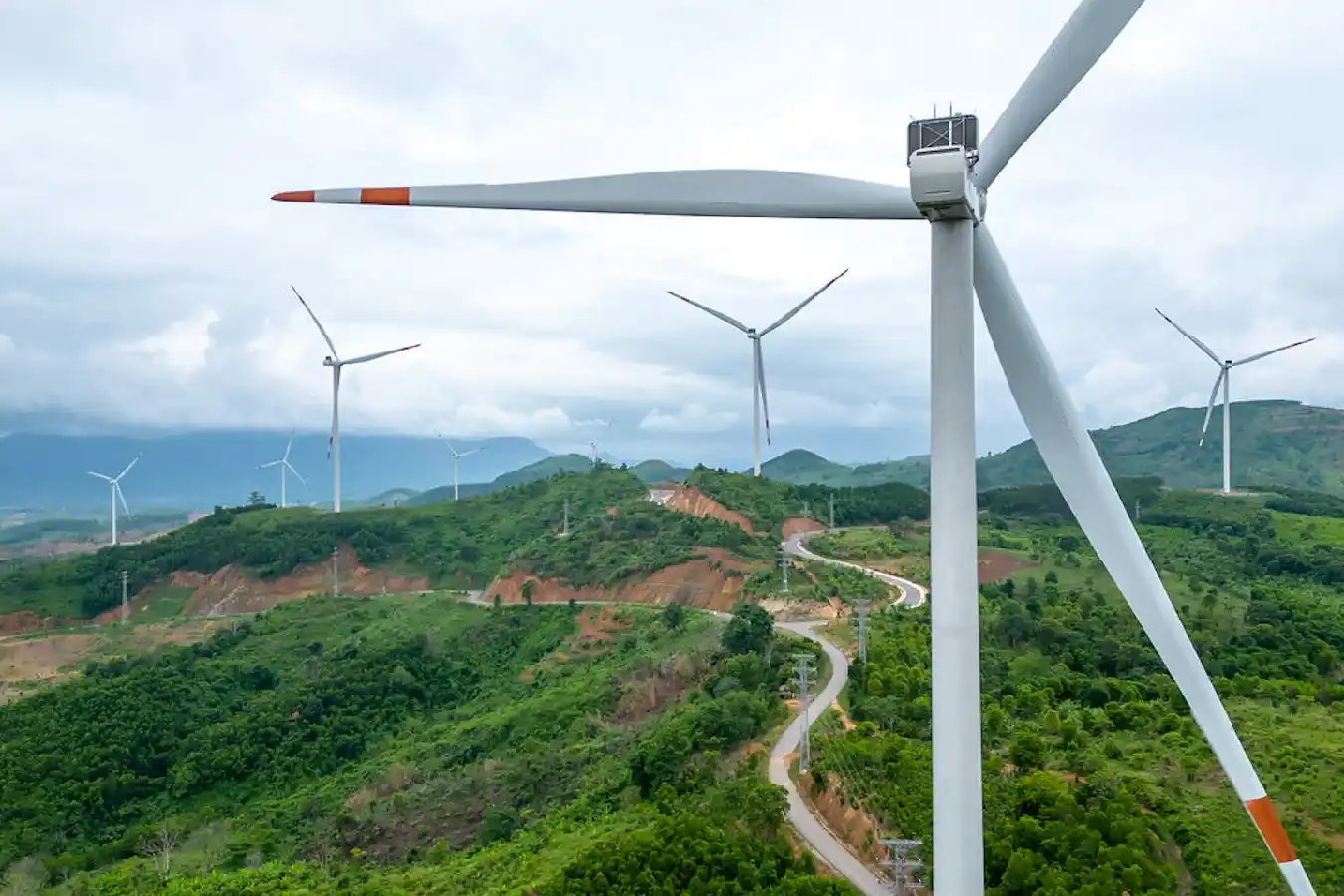Vietnam is poised to become a key player in Southeast Asia’s energy landscape with an ambitious plan to export renewable energy to Malaysia and Singapore via submarine cables. Announced as part of the country’s broader push toward sustainable development, this initiative could reshape regional energy dynamics, reduce dependence on fossil fuels, and position Vietnam as a leader in green technology. As the project unfolds, it raises critical questions about infrastructure challenges, geopolitical implications, and the economic benefits for a nation rapidly transitioning to renewables.
The Plan: Powering Neighbors with Clean Energy
Vietnam’s renewable energy sector has seen remarkable growth in recent years, driven by investments in solar and wind power. The country now aims to capitalize on this surplus by exporting electricity to neighboring nations through an innovative submarine cable network. The proposed cables, which would stretch across the South China Sea, are intended to connect Vietnam’s grid to Malaysia and Singapore, two energy-hungry markets with ambitious carbon reduction goals.
According to state media reports, the project aligns with Vietnam’s National Power Development Plan, which targets a significant increase in renewable energy capacity by 2030. If successful, the initiative could transmit up to 2 gigawatts of electricity annually, enough to power millions of homes. Industry experts suggest the deal could generate substantial revenue, with estimates of contracts worth billions of Vietnamese Dong (specific figures are yet to be finalized, but conversions to USD will depend on exchange rates at the time of agreement).
The technical feasibility of the project hinges on underwater transmission technology, an area where Vietnam is partnering with international firms. While details on funding and timelines remain sparse, officials have indicated that discussions with Malaysia and Singapore are in advanced stages, with potential agreements expected within the next two years.
Regional Implications: A New Energy Map
The export of renewable energy marks a significant shift for Vietnam, traditionally a net importer of energy resources like coal. By pivoting to exports, the country could reduce its reliance on volatile global fuel markets while strengthening ties with ASEAN neighbors. Singapore, which imports nearly all of its energy, has already expressed enthusiasm for the project as part of its Green Plan 2030. Malaysia, meanwhile, seeks to diversify its energy mix amid growing domestic demand.
Analysts note that the submarine cable project could also serve as a geopolitical tool. Energy interdependence often fosters closer diplomatic relations, and Vietnam’s initiative may help ease tensions in the South China Sea, a region marked by territorial disputes. However, some caution that reliance on cross-border infrastructure carries risks, including potential disruptions due to political disagreements or technical failures. As one energy consultant based in Ho Chi Minh City put it, “This is a bold move, but it requires trust and coordination on all sides”.
Beyond diplomacy, the project underscores Vietnam’s commitment to global climate goals. The country has pledged to achieve net-zero emissions by 2050, a target that hinges on scaling up renewables while phasing out coal-fired plants. Exporting clean energy could provide the financial incentive needed to accelerate this transition, though it also raises questions about whether domestic needs will be prioritized over international commitments.
Challenges: Infrastructure and Investment Hurdles
While the vision is ambitious, the path to realization is fraught with challenges. Submarine cables are notoriously expensive and complex to install, requiring significant capital and expertise. Costs could run into hundreds of millions of USD, depending on the length of the cables and the seabed conditions. Vietnam will likely need to secure foreign investment or loans to fund the project, a process that could be complicated by global economic uncertainties.
Environmental concerns also loom large. The construction of underwater cables must navigate sensitive marine ecosystems, and any misstep could draw criticism from conservation groups. Vietnamese authorities have promised to conduct thorough environmental impact assessments, but skepticism remains about enforcement, given past infrastructure projects that have faced accusations of inadequate oversight.
Domestically, the project must contend with grid reliability issues. Vietnam’s rapid expansion of renewable energy has occasionally outpaced its ability to integrate new capacity into the national grid, leading to curtailment of solar and wind power in some regions. Ensuring a stable supply for export while meeting local demand will require significant upgrades to transmission infrastructure—a task that could take years and billions in investment.
Economic Impacts: A Boost for Growth?
If successful, the energy export plan could provide a substantial boost to Vietnam’s economy. The revenue from electricity sales would bolster state coffers, potentially funding further renewable energy projects or social programs. Moreover, the initiative could attract foreign direct investment in related sectors, such as manufacturing for renewable energy components like solar panels and wind turbines.
Local communities stand to benefit as well, particularly in regions hosting renewable energy facilities. Job creation in construction, maintenance, and technology roles could provide a lifeline for rural areas, where economic opportunities are often limited. However, there are concerns about equitable distribution of benefits, as large-scale projects in Vietnam have sometimes prioritized corporate interests over local needs.
For Malaysia and Singapore, the deal offers a chance to meet sustainability targets without the land constraints that limit domestic renewable energy development. Singapore, in particular, lacks the space for large-scale solar or wind farms, making imported green energy an attractive option. Yet, both countries will need to weigh the cost of imported electricity against domestic alternatives, a calculation that could shift depending on global energy prices.
Public and Political Sentiment
Within Vietnam, the project has sparked a mix of optimism and caution. Many citizens view it as a point of national pride, a sign that the country is stepping onto the global stage as a leader in clean energy. Social media platforms reflect this sentiment, with users praising the government’s forward-thinking approach. However, others express concern about the financial burden of such a large-scale project, especially if costs are passed on to taxpayers or if domestic energy prices rise as a result of exports.
Politically, the initiative enjoys broad support within the National Assembly, where it is seen as aligning with Vietnam’s broader industrialization and modernization goals. Still, debates persist about the pace of implementation and the need for transparency in international agreements. As one lawmaker noted during a recent session, “We must ensure that this project serves the Vietnamese people first, before it serves others”.
Looking Ahead: A Test of Vision and Execution
Vietnam’s plan to export renewable energy via submarine cables is a bold step toward redefining its role in Southeast Asia. If executed effectively, it could cement the country’s status as a regional energy hub while advancing global sustainability goals. Yet, the road ahead is littered with technical, financial, and political obstacles that will test the government’s resolve and capacity for innovation.
As negotiations with Malaysia and Singapore progress, all eyes will be on how Vietnam balances its domestic priorities with international ambitions. The success of this project could set a precedent for other nations in the region, potentially sparking a wave of cross-border energy collaboration. For now, the question remains: can Vietnam turn its renewable energy surplus into a transformative force for both itself and its neighbors?
















